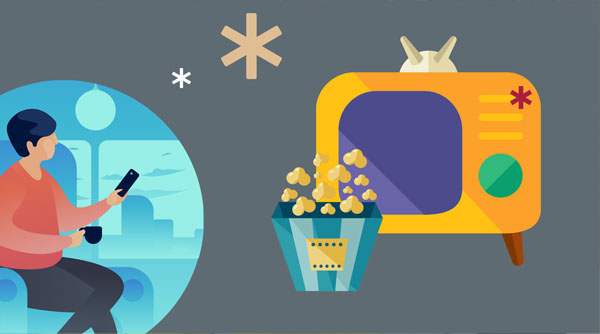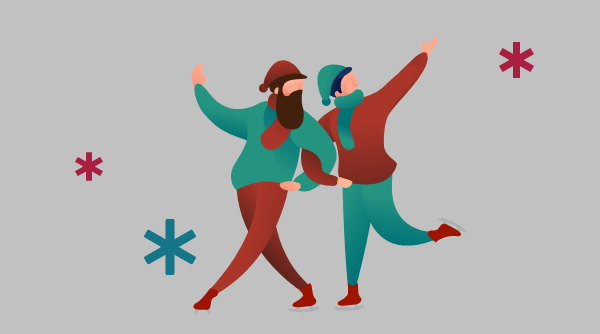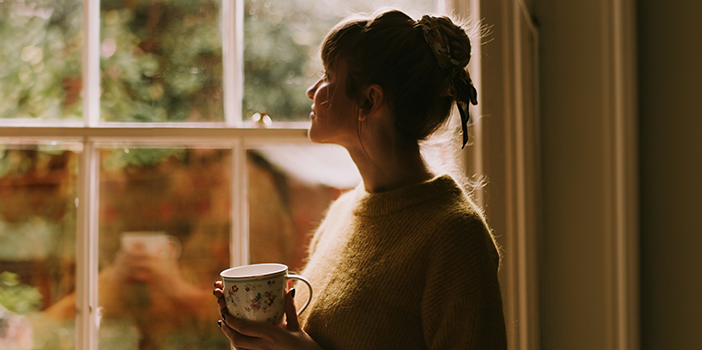
In Denmark, we especially use hygge to survive the many dark and cold months every year. But hygge is also a part of Danes’ lives in summer, for instance when we stay at a summer cottage or meet up for an evening of barbecuing under open skies. Hygge is unavoidable when you decide to live in Denmark – whether it’s for a short period or perhaps the rest of your life.
You don’t need to read long, theoretical books or articles about hygge in order to experience plain old Danish hygge. Hygge is very informal. The best experiences of hygge come almost without effort. But still, it’s probably a good idea to know a little about hygge so that you know what to look forward to.
What is hygge?
We often define hygge as a way to spend time together that is nice, comfortable, safe and relaxed. The word hygge has been accepted into the English language, and in English, it is used both as a noun and an adjective. Not so in Danish! In Danish, hygge is a noun, but the adjective form is ’hyggelig’. We also use hygge as a verb when we say a sentence like, ’vi hygger os’ or ‘jeg hygger mig’. It’s a little hard to translate, but it basically means ‘we are having a hyggelig time’ or ‘I am having a hyggelig time’.
This is how you enjoy hygge the Danish way
Hygge is a popular and beloved part of everyday Danish life. And with minimal means, you can make hygge a part of your own everyday life, too.
Hygge can be enjoying a cup of tea in your favourite armchair with a good book, a pair of warm socks on and a box of chocolates nearby. If you just came in from being outside in the cold, perhaps from a long walk, it makes it even more ‘hyggeligt’.
Hygge can also be eating good food and drinking a glass of wine with friends and acquaintances while you’re talking and listening to music.
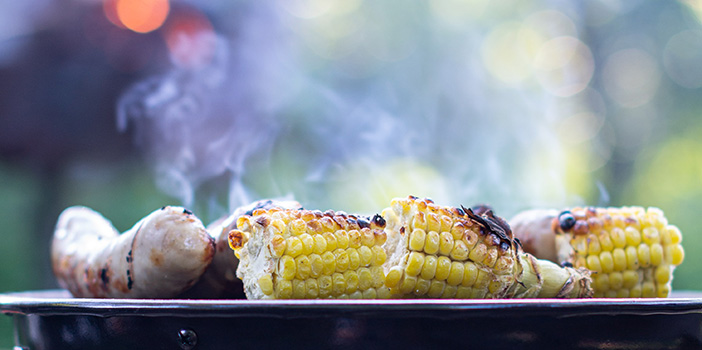
Or hygge could be a having a barbecue one evening with family or colleagues, playing ‘kongespil’ (an old game dating back hundreds of years) in the garden. Perhaps your Danish host serves you strawberries for dessert.
It’s also popular to ’hygge’ with creative pursuits.
There are a thousand other ways that you can ’hygge dig’. The important point is to keep the mood relaxed.
Hygge only works if we are relaxed – alone or with others. If the way we are together becomes formal, refined or overly correct, then we don’t experience it as hygge.
Of course, there is also ’julehygge’ (Christmas hygge). That’s when you ‘hygge’ with Christmas as the theme. Perhaps a get-together with ’glögg’ (mulled wine) and ’æbleskiver’ (special little round cakes). You can read much more about that in our blog about Danish Christmas.
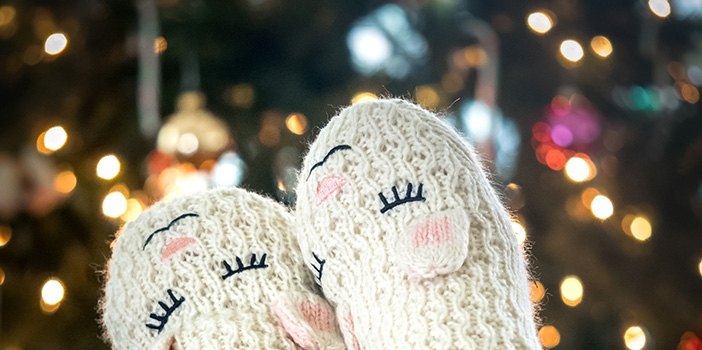
What are the benefits of hygge?
Hygge can reduce and prevent stress because you are taking a break from thinking too much.
When you ’hygger dig’, you push your problems and worries to the side and focus on what is pleasant.
Hygge is also a good way to maintain and enjoy friendships. Hygge makes you happy. Perhaps even blissful.
The writer Meik Wiking, whose famous books about hygge have been translated into more than 30 languages, sees a clear correlation between hygge and happiness. His research suggests that hygge helps make Danes happy.
5 classic Danish phrases with the word ‘hygge’
Here a five typical examples of what we might say when we talk about hygge in an everyday context.
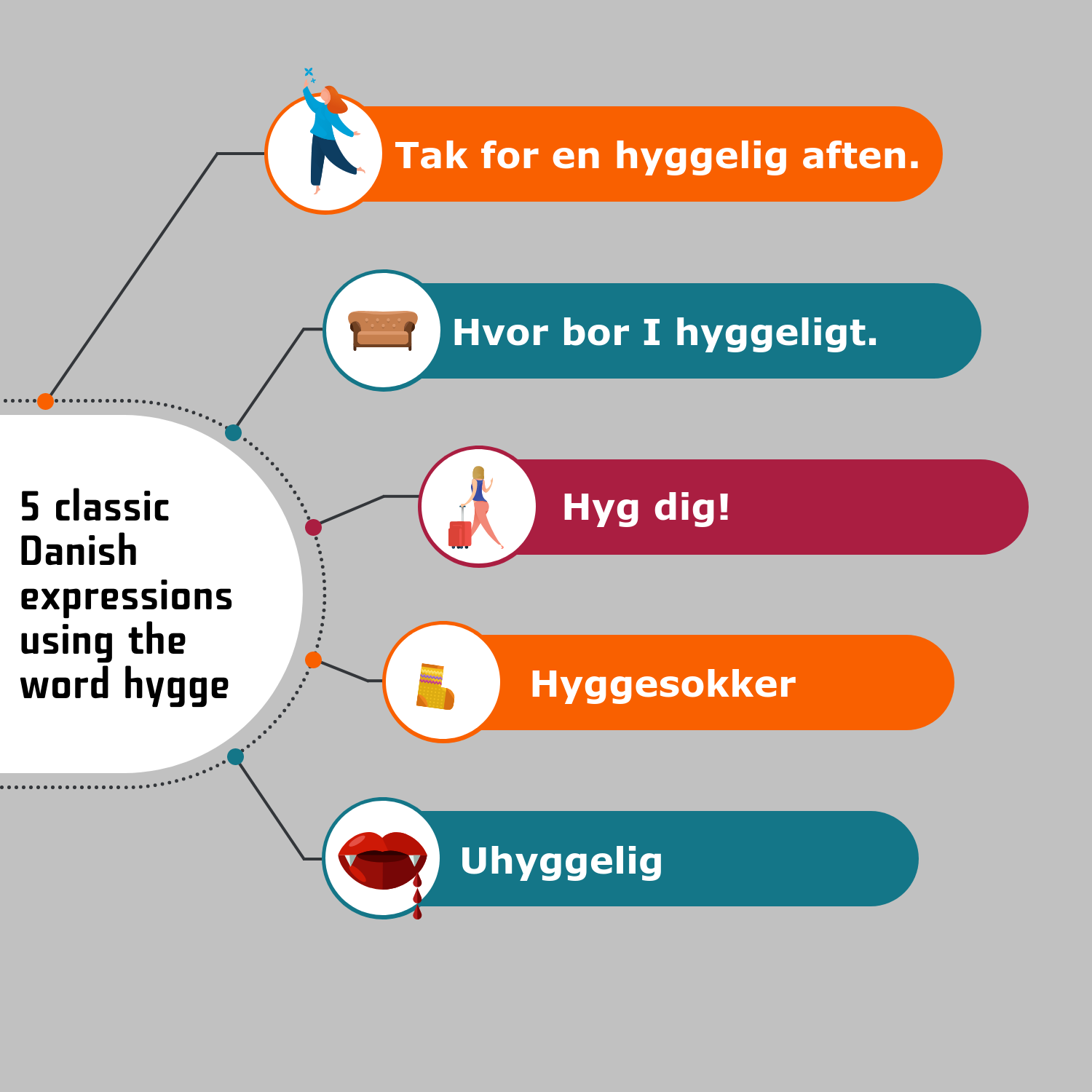
Tak for en hyggelig aften
This is a polite way to say thank you and goodbye to your friends and acquaintances, perhaps after a dinner at someone’s home or an evening on the town.
Hvor bor I hyggeligt
This is a polite compliment that you can say when someone invites you into their private home for the first time. Most Danes would be happy to hear this.
Hyg dig!
This is a nice way to express a positive wish for your friend or acquaintance. It means that you hope your friend will have a fun and lovely – or simply a ‘hyggelig’ – time!
Hyggesokker
When we combine the words hygge and ’sokker’ (socks) it means a pair of thick and warm socks. Perfect for a day at home when all you want to do is curl up on the couch.
Uhyggelig
’Uhyggelig’ is the opposite of ’hyggelig’. It refers to scary, nasty and unpleasant things and experiences. Halloween is a good example of something that is ’uhyggeligt’.
Read more about hygge here
Are you curious to learn more about hygge? You can dive into some of the interesting books that have been published over the last few years – including the books by Meik Wiking.
The Little Book of Hygge: The Danish Way to Live Well
by Meik Wiking
My Hygge Home: How to Make Home Your Happy Place
by Meik Wiking
Hygge: The Danish Art of Happiness
by Marie Tourell Soderberg






